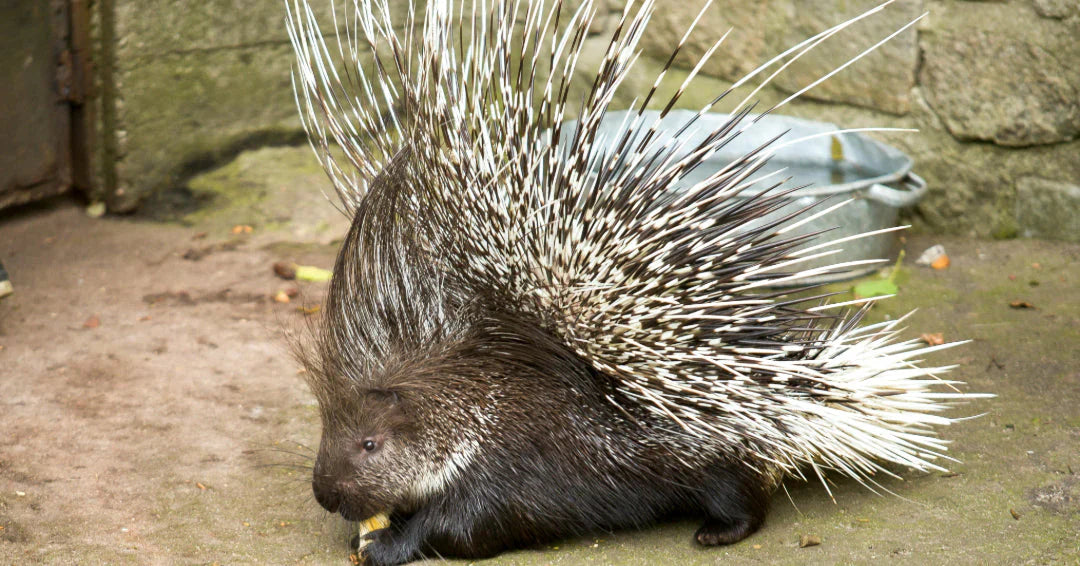Porcupines are interesting critters to study. Their distinctive coat of sharp quills makes them easily identifiable to anyone who spots one sneakily slinking past them at night. For curious kids who want to learn more about the behaviors, habitats, predators, and defense mechanisms of these strange rodents, here are some facts about porcupines that will to share.

Interesting Information About Porcupines
Reading kids books about porcupines is a fantastic way to learn all about these elusive animals. The stories weave all kinds of fascinating information about their behavior, diet, and habit throughout tales of fiction. Make sure to add some non-fiction titles as well, as these books are chock full of valuable facts for kids who love learning about animals. Readers will love stories involving lonely animals with a prickly exterior that gets in the way of forming friendships. The authors take liberty in how they present the disposition of these critters, so for kids who want the truth, share these tidbits about how they really behave, defend themselves, prefer to eat, and more.

How Porcupines Defend Themselves
Slow, clumsy moving bodies low to the ground would seemingly make them easy prey. Many times the site of white-tipped quills is enough to send hungry predators off to find another victim. Sharp daggers cover the bodies of porcupines, and in some cases can grow up to a foot long. The quills are loosely attached to their bodies, but cannot shoot them at predators. When sensing danger, porcupines shake their bodies which causes the quills to rattle. If this tactic does not work, the porcupine will charge backwards toward the threat to chase it away. Although the quills have barbs that make them difficult to detach, sometimes they do fall off. Fortunately, porcupines can grow new ones in their place.
It's a good thing that porcupines have a lot of tricks up their sleeves to deter predators, or the life expectancy would be much shorter than the average of 18 years. They also have well-designed claws perfect for climbing trees, yet another escape tactic. Clattering their teeth is also effective at deterring threats in the wild. And when all else fails, they employ their main weapon, a sophisticated system of sharp quills. First a nasty scent is released, and then they drive the quills into the enemy. A highly evolved release system allows the porcupine to separate from the quills that are embedded in the predator. Fortunately, just like hair, porcupines will regrow quills for the next time.

Habitat of Porcupines
Found in a wide spectrum of terrains, including forests, mountains, deserts, rainforests, and grasslands, porcupines manage to adapt pretty easily. They prefer to make their dense in hidden areas like rock crevices, tangled tree branches, dense brush, or hollowed logs.
With robust arsenal of defense mechanisms, these spiky animals do not rely on others to survive. They prefer to live a solitary life, showing very few signs of socializing with their species except during very specific times of the year. For instance, during the cold winter months, up to a dozen prickly critters will commune in a den, perhaps for a little company or warmth when temperatures drop. Courtship is another period of close encounters, with multiple males often competing to win over the same female. The competition can get so fierce that it turns physical, resulting in quill and bite injuries.

Porcupine Diet
Opportunistic eaters, they instinctively take advantage of the vegetation that is available throughout the year. During the summer, they nibble on berries, fruit, stems, grass and leaves. When fall arrives, they adjust their diet to acorns, hickory nuts, and beechnuts. Harsh winter weather limits the availability of food, forcing them to feed on the needles and inner bark of evergreen trees. Fortunately, spring delivers a fresh number of options, including buds and young leaves sprouting from trees.
These clever creatures have been known to chew on bones to sharpen their teeth. They also need to wear them down since they continuously grow throughout their lives. This process is called osteophagia. These animals also seek out bones for certain healthy minerals like salt and calcium. Hoarders by nature, they have a reputation for collecting thousands of bones that are stored around their dens. When porcupines need a break from hard bones, some will snack on bugs and lizards.

Porcupine Reproduction
An aggressive period of courtship involves the males engaging in violent fights, using their quills and incisors as weapons to fend off their competitors. Once a winner emerges, he urinates on the female and then the act of procreation occurs.

Porcupine Anatomy
Porcupines may have a lot of tricks to avoid predators, but speed is not one of them. They move in a plantigrade form where the entire soles of their feet are touching the ground when the walk or run. At their fastest pace, which looks like a waddle, these prickly creatures reach 2 miles per hour. To put some perspective around this rate of movement, consider the pace clocked for other animals in the wild. Raccoons, for instance, move at a rate ranging from 10 to 15 miles per hour. Speedy squirrels race around at 20 mph, while coyotes top 40 mph.
Slightly smaller than a beaver, porcupines generally measure anywhere from two to three feet long and weigh approximately 20 pounds. Males tend to weigh seven to ten pounds more than females.

More Unusual Animal Facts for Children




